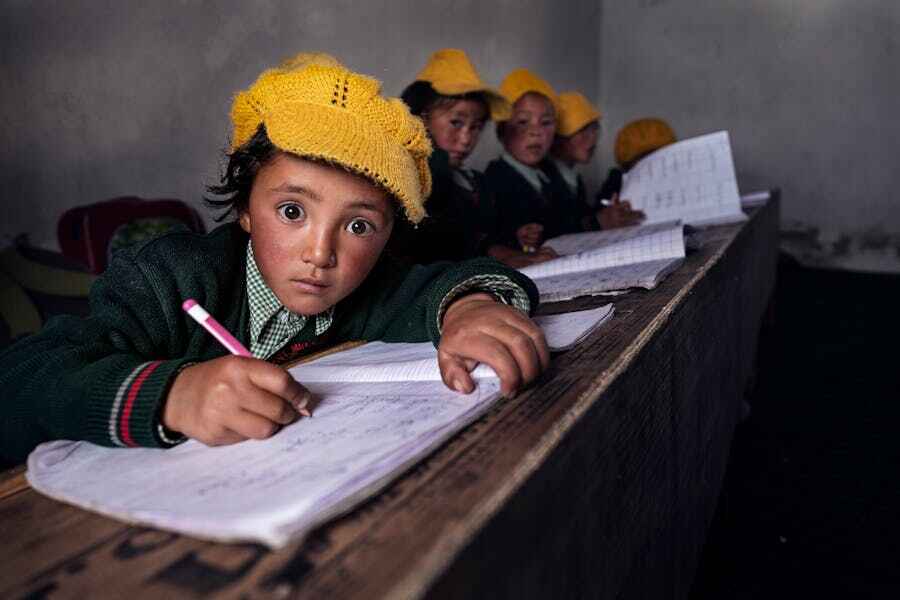School violence impairs students’ learning and mental health. It fosters an environment of fear and hampers academic engagement.
School violence is a major hurdle in the path of educational and emotional development for students. It encompasses a range of aggressive behaviors, from bullying and physical fights to more severe actions like shootings. Such incidents not only disrupt the learning environment but also significantly strain the mental and emotional well-being of young individuals.
Students exposed to violence may experience anxiety, depression, and difficulty concentrating. This can lead to a decline in academic performance, higher dropout rates, and social isolation. Safety concerns can also cause persistent stress, unfavorably affecting students’ ability to thrive within the school setting. Highlighting the issue of school violence is critical for policy-making, ensuring schools implement effective measures to create a safe academic environment.
School Violence: Gripping Reality
Students face many hurdles. One grim challenge is school violence. Violent incidents at school impact student lives greatly. Understanding the issue brings us closer to a solution.
The Many Forms Of School Violence
The term ‘school violence’ has a broad meaning. It’s not just physical fights or bullying. There are many forms:
- Physical Violence: This is fights or physical abuse.
- Verbal Abuse: Name-calling, threats, and offensive language count too.
- Cyberbullying: Social media or chatrooms often fuel hate and fear.
- Sexual Harassment: Any form of unwanted sexual attention falls under this.
Each form of violence affects students. Some effects are apparent. Others are subtle but long-lasting.
Trends And Statistics: A Closer Look
Data provides an ugly view of school violence. The impact on students can be life-altering.
| Trend | Statistic |
|---|---|
| US students fearing safety at school | 34.8% |
| Cyberbullying incidents in 2019 | 15.3% |
| US high school students in a fight (2017) | 23.6% |
| Sexual violence victims in US high schools | 9.4% |
These stats underline the grim reality. They emphasize the urgent need for action.
School violence affects students. Every form leaves a mark. Understanding its impact is crucial. School violence is a harsh reality. By grasping its true influence, we can begin to combat it.
Immediate Consequences On Students
The Immediate Consequences on Students due to school violence are often intense. The effects are both physical and psychological. Let’s delve deeper into these implications on young learners.
Physical Injuries And Their Aftermath
Often, violent incidents in schools lead to Physical Injuries. These may range from minor scratches to more severe forms of harm.
- Minor injuries often heal quickly with minimal impact.
- Severe injuries can lead to chronic conditions or disability.
The aftermath of these injuries can be significant. It can affect not only physical health but also academic performance and social interactions.
The Psychological Toll: Anxiety And Fear
Beyond the physical hurt, school violence also takes a Psychological Toll. This manifests as Anxiety and Fear among students. The constant fear of becoming a victim can severely affect a student’s mental and emotional health.
- Kids often feel scared to attend school.
- Aggression and anger are common reactions.
- Confidence and self-esteem might take a massive hit.
Anxiety and fear can lead to poor concentration, decreased academic performance, and an overall decline in quality of life.
Long-term Emotional Impact
The long-term emotional impact of school violence extends far beyond the immediate incident. Affected students may carry the psychological burdens for years, impairing their mental health, behavior, and academic success.
Scars Of Trauma: Ptsd In Students
School violence often leaves behind deep psychological scars, manifesting as Post-Traumatic Stress Disorder (PTSD) in students. Young survivors face a spectrum of challenges:
- Recurring memories of the event interrupt daily life.
- Sleep disturbances, like nightmares, disrupt rest.
- Emotional numbing affects relationships.
- Heightened alertness leads to anxiety in school settings.
Support systems like counseling help heal these traumas. Without them, PTSD can severely affect a student’s developmental trajectory.
Impact On Learning And Academic Performance
School violence does not only cause emotional distress; it also has a direct impact on a student’s ability to learn. Here’s how:
| Effect on Learning | Details |
|---|---|
| Concentration Problems | Frequent distractions and anxiety make focusing on tasks difficult. |
| Attendance Issues | Fear of violence may lead to frequent absences, hindering learning continuity. |
| Social Withdrawal | Isolation from peers decreases engagement and collaborative learning. |
| Academic Decline | Stress affects cognitive functions, resulting in lower grades and test scores. |
Interventions like tailored academic support and inclusive school policies can mitigate these impacts, ensuring every child has the chance to achieve their best in a safe learning environment.
Social Implications And Peer Dynamics
School violence can reshape the social landscape of education. It disturbs student interactions and damages the fabric of peer relationships. Understanding these changes is key to supporting affected students.
Altered Interactions: Trust And Relationships
In a school environment marred by violence, trust declines. Students may feel wary of forming new relationships. The shift can impede learning and collaboration. Teachers and parents might notice these signs:
- Reluctance to participate in group work.
- Decline in classroom discussions.
- Weaker student bonds as fear overshadows the desire to connect.
Bullying And Social Isolation
Bullying is a direct form of school violence. It leads to social isolation for victims. Those targeted may avoid social interactions due to fear. This detachment can lead to serious emotional distress.
The social fallout of bullying includes:
| Impact | Consequence |
|---|---|
| Loss of friendships | Victims find themselves alone more often. |
| Skip school | School becomes a place to avoid. |
| Social skills suffer | Opportunities to practice socializing diminish greatly. |
For bystanders, witnessing bullying can create an atmosphere of fear. They may avoid defending victims to protect their own social status.
Countering The Effects Of School Violence
Dealing with School Violence is vital. Impact on students is deep and damaging. Proactive steps are necessary to aid students in recovery since school should be a safe place for learning. There are sound methods to counter these effects. Two major ones are explained below.
Healing Through Counseling And Support
Counseling and support play a crucial role in healing. Students exposed to violence need steadfast emotional support. Counseling can help students overcome trauma and regain confidence.
- Professional counselors can on the emotional healing of students.
- Support groups provide comfort in knowing they are not alone in their experiences.
- Promoting open communication is crucial. It allows students to express their feelings safely.
- Artistic therapies such as music and painting allow non-verbal expression of their emotions.
Counseling and support can effectively heal. They return students to their normal learning paths eventually.
Creating Safer School Environments
Safe learning environments reduce the chances of violence. In making schools safer we can counter school violence effects. A focus on enhancing security and promoting inclusive behaviors can be of immense help.
| Security Enhancements | Inclusive Behaviors |
|---|---|
| Security measures such as surveillance cameras and controlled access to school premises. | Encourage acceptance and respect of diversity within the school community. |
| Regularly update emergency response procedures. | Promote kindness, inclusivity and bullying prevention in school policies. |
Safe learning spaces foster student development. Protection from violence accelerates growth.
The Way Forward: Prevention And Awareness
School violence challenges our students and inhibits their learning path. It’s crucial to focus on viable solutions. There are two major steps. First, we need policy changes and a proper legal framework. Second, we need to strengthen educational programs and push for broader community involvement.
Policy Changes And Legal Framework
Policy changes can drive effective results in curbing school violence. They also set a firm ground for the execution of laws.
- Strict Anti-bullying Laws: A law that delivers severe punishment for bullies can deter potential offenders.
- Professional Counseling Laws: A law requiring schools to provide professional psychologists can help address student’s issues.
Laws alone are not enough. We need to establish a strong legal framework to enforce them. It will include:
- Regular Compliance Audits
- Swift Action against Non-Compliance
Educational Programs And Community Involvement
Education and community participation are the backbone of this solution. Let’s dive into why they’re essential.
| Educational Programs | Community Involvement |
|---|---|
| Instills values and respect. | Provides a support system. |
| Helps identify early signs of violence. | Enhances awareness and prevention. |
| Teaches conflict resolution. | Creates a safe environment for children. |
By building a strong educational module and involving the community, we create a reliable and responsive support system for our students. Together, we can stop school violence and provide a safer learning environment.

Credit: www.infomigrants.net
Frequently Asked Questions For How Does School Violence Affect Students
What Are The Effects Of School Violence On Learning?
School violence undermines academic performance by causing distractions, anxiety, and attendance issues. It often results in lower grades and reduced cognitive development. Students may also experience difficulty concentrating and a lack of interest in learning.
How Does Violence Affect Children?
Violence can have severe impacts on children, leading to emotional distress, aggressive behavior, and developmental challenges. Experiencing or witnessing violence often results in trauma, affecting their mental health and academic performance.
What Are The Negative Effects Of Violence?
Negative effects of violence include psychological trauma, physical injuries, and chronic health issues. It can cause social isolation, lower quality of life, and early death. Also, it often perpetuates cycles of violence.
What Are The Risk Factors For School Violence?
Risk factors for school violence include bullying, substance abuse, exposure to violent media, family conflict, and lack of school security. Firearms access and mental health issues can increase this risk. Social isolation, aggression, and poor academic performance are also potential indicators.
Conclusion
School violence deeply impacts student life. Its detrimental effects stretch beyond the physical, insidiously inflecting emotional and academic harm. Addressing this issue necessitates collective effort. Let’s strive for safer, healthier scholastic environments, and secure brighter futures for our children. Safeguarding students from violence is, ultimately, investing in our society’s future well-being.












































Leave a Reply